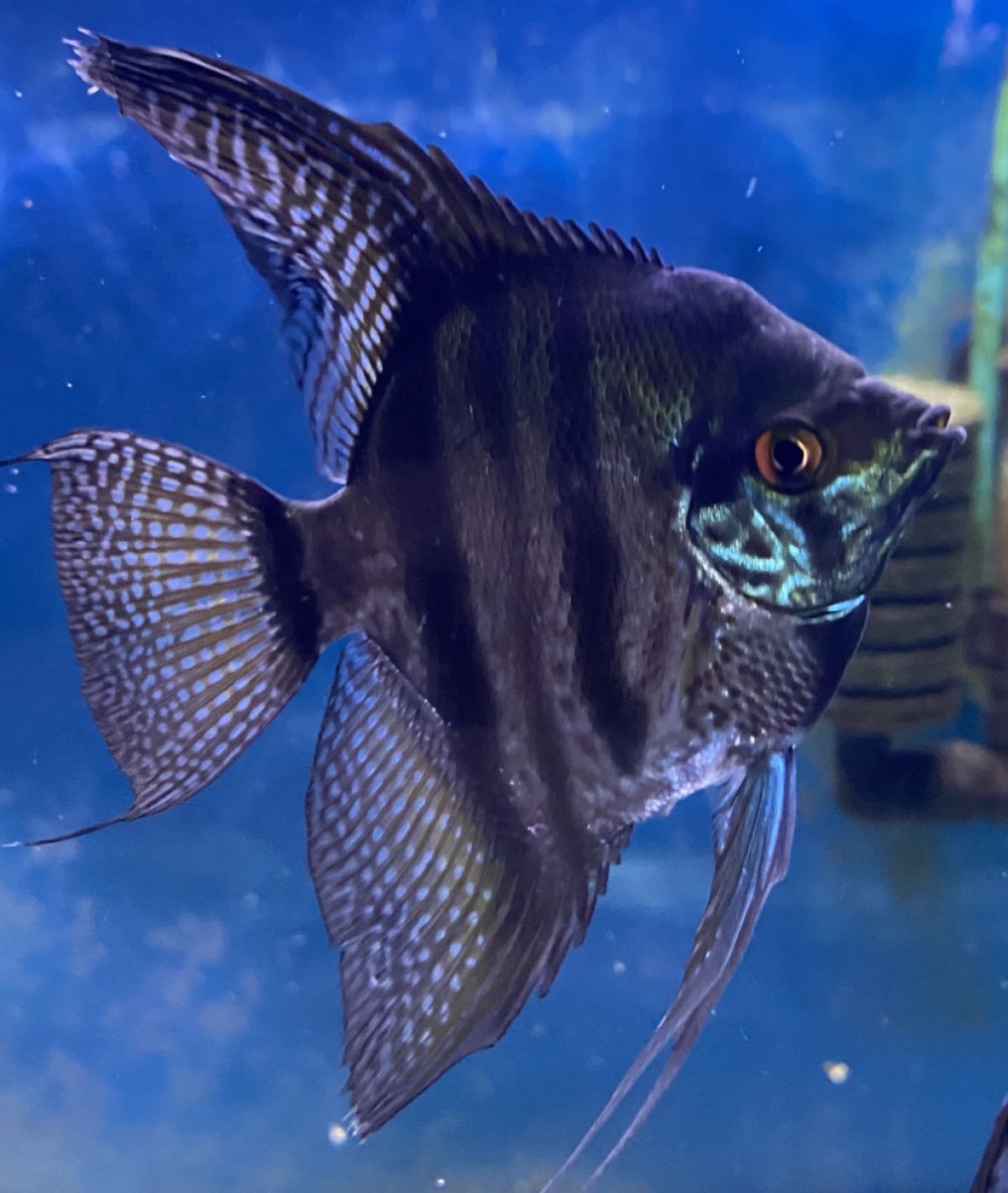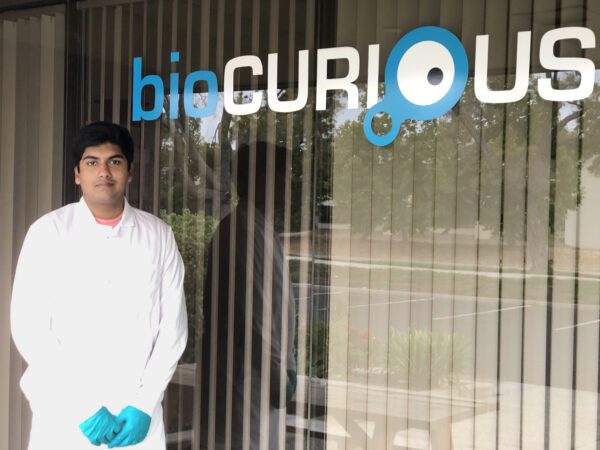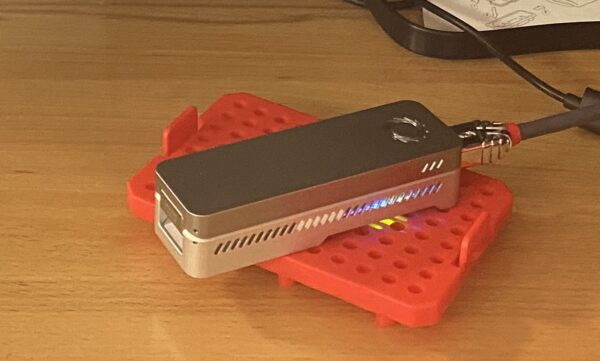Citizen scientists: How a high school student broke new biological ground

When my family’s pet goldfish died, we held a little funeral for him in the garden. I believe I sang ‘Amazing Grace’, which some people may consider a little over the top, however much I loved Goldy.
What I didn’t do was conduct a full genome sequence of my pet during my time off from school. This is the difference in attitude which makes 17-year-old Indeever Madireddy one of biology’s rising research stars, and me a mediocre physics undergraduate.
Last year, Indeever Madireddy, a high school student from California, completed the world’s first whole genome sequence of the angel fish. These are a species of freshwater cichlid that is native to the Amazon Basin and are commonly kept in captivity.
Assembling an entire genome sequence like this, without a prior reference sequence available for alignment, is known as ‘de novo assembly’, and involves joining together a large number of DNA fragments.

Sequencing Calvin
Madireddy had raised his pet fish, Calvin, from birth.
“We started keeping fish seriously in like seventh grade [around 12-13 years old], and I got a pair of angel fish in around August of 2020. My parents’ angel fish would lay eggs every month, but the baby fish would never really survive, and I wanted them to live.
“So I decided to move the baby [angel] fish into a new aquarium and raise them […] I had to feed them brine shrimp because they can’t eat regular fish food. I raised them to adulthood, and I moved them into a larger tank, and I had a huge number of angel fish that I raised from birth.”
It was there that serendipity set in.
“I do my research at ‘BioCurious’, which is a local laboratory for DIY biology, independent research entrepreneurs, you can come there and do almost anything you want and a few people there were working on sequencing projects.
“That got me interested in sequencing [and] by complete chance, I started looking into genomes and the sequencing of fish genomes. I learned that the genome of the freshwater Angel Fish is something that hadn’t been completed yet […] and then here’s kind of where the coincidence happened.
“Just two weeks later, one of my pet angel fish passed away […] I decided that, okay, the fish passed away, instead of burying it outside or flushing it down the toilet, let’s sequence its genome, and put that information out there.
“So [it was] just by complete luck and complete timing that I learned that there was a gap in knowledge, and then I got the opportunity to do the project.”
“Democratising and sharing science”
Madireddy believes that the environment of a community lab, where people are working on individual projects, whilst helping each other out, is one of the things that makes it so valuable.
“There’s a lot of other lab colleagues, people there working, and I always ask for help, for advice, and everyone’s so willing to help me.”
In addition, BioCurious provided Madireddy with resources he could have never afforded on his own.
“BioCurious makes the research equipment, the lab reagents, a community where you can learn from others, really accessible to students. I think that’s what I really like about BioCurious – that anyone can come in, do what they want to do, and change the world on their own terms.”
Despite the invaluable resources the lab makes available, Madireddy is keen to stress that is still very different to the environment of a professional lab – in a good way.
“The lab is completely volunteer-run, so everyone who works there is doing it because they want to do it. They all want to spread the mission of democratising and sharing science.
“A lot of the lab equipment, the lab reagents we have in the lab, are not things that were purchased by the lab, they’re like, hand-me-downs from like big biotech companies who don’t want there, you know, they’re upgrading their equipment, or they bought new reagents.
“So there’s always a sense of resourcefulness, you know, doing things on your own, because we also don’t have super fancy equipment at the lab. We don’t have the state-of-the-art machines, we have to make do with what we have.”
This sense of resourcefulness, Madireddy emphasises, is what sets ‘citizen science’ apart from other research, and is why amateur scientists can benefit scientific progress – particularly students.
“We find ways to work around things that maybe an older researcher doesn’t have to do just based on circumstance and situation.”
However, it’s undeniably harder to fit in scientific research around daily life – particularly if you are a high school student.
“I would go to school, just like any other student in the morning, usually around eight o’clock, I’d come home by around four or five o’clock, do my school homework study for tests.
“A lot of it was it was tough. I go to a pretty rigorous STEM-focused high school, and I take a lot of classes too – around eight a year. So it’s definitely a lot of work, a lot of homework and tests to study for.
“[After my homework] I‘d go to the lab […] and sometimes you’d be three to four hours a day working on the research.”
New technology and independent research
An added challenge was the COVID-19 pandemic. This reduced the capacity of the lab and cancelled a lot of the training sessions that Madireddy would ordinarily have had access to, meaning he had to teach himself a lot of the skills required. The accessibility of information online has opened up opportunities to student scientists that just didn’t exist in past decades.
In addition, Madireddy stressed the benefits of technological developments on the affordability of independent research. The nanopore technology he used to carry out genome sequencing has opened up genetic research to a far wider market than before, and is considerably cheaper than the previous industry standards.
However, the nanopore sequencer and flow cell he used will still set you back $1,000, which was more than Madireddy could afford out of pocket. He turned to experiment.com, a crowd-funding platform for scientific researchers, to raise the money – yet another example of how recent decades have increased the democratisation of science.

He was also able to carry out his sequencing on the Galaxy bioinformatics platform, which is accessible for free.
“I definitely wouldn’t have been able to do this project if I didn’t have this new technology.”
Madireddy didn’t have a computer science background, so he had to teach himself the bioinformatics work required to put together the sequencing results, assemble the angel fish genome and ensuring contaminants didn’t interfere with his results. Aside from this, he said the biggest challenge was more emotional.
“When the fish died, I had to cut it up into pieces so I could freeze it in the minus 80-degree freezer and preserve its DNA. That was a little tough cutting up my own pet fish into little chunks – I don’t know if I’ll do that again.”
His motivation, as with so many scientists, was simple – curiosity.
“I was just genuinely curious about my fish. Ever since I was young, I wanted I’ve always said I wanted to be a scientist, so when I had the chance I took it.
“I wanted to contribute to the scientific community and increase the amount of knowledge we have. Maybe one day, the angelfish can be a model organism for scientific research, just like the zebrafish is now.”
Opportunities for Madireddy are already opening up. He won a large scholarship from the Davidson Institute in 2022, an organisation designed to support profoundly gifted youth in the US – but characteristic of his apparent lack of self-promotion, he doesn’t mention this in the interview. He’s already being invited to scientific conferences, and it seems likely he’ll have his pick of colleges.
Despite this, he appears humble and well-balanced, which should serve him well as he enters the professional arena. He is also passionate about encouraging other students to get involved in research for themselves.
“Starting is the most important thing. Whatever topic in biology you may be interested in, just start reading about it.
“Figure out what’s not been done yet, and see if you can solve that problem with the resources you have at hand. I know a lot of students don’t have access to the lab I had access to but […] there’s a lot of research you can do online and on your own with just your laptop.
“Just jump into it. Just do it.”







